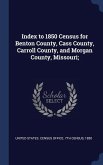The "Census of Quirinius" refers to the enrollment of the Roman Provinces of Syria and Iudaea for tax purposes taken in AD 6/7 during the reign of the Roman Emperor Augustus, when Publius Sulpicius Quirinius was appointed governor of Syria, after the banishment of Herod Archelaus and the imposition of direct Roman rule on what became Iudaea Province the conglomeration of Samaria, Judea proper, and Idumea. An account of the census was given by the first century historian Josephus, who associated it with the beginning of a resistance movement that he called the Zealots. In Christianity, the Gospel of Luke connects the birth of Jesus with this historical census, while the Gospel of Matthew places the birth at least a decade earlier, during the rule of Herod the Great. Bible scholars have traditionally attempted to reconcile these accounts; most modern scholars, according to Raymond E. Brown, regard this as an error by the author of the Luke Gospel.
Bitte wählen Sie Ihr Anliegen aus.
Rechnungen
Retourenschein anfordern
Bestellstatus
Storno








